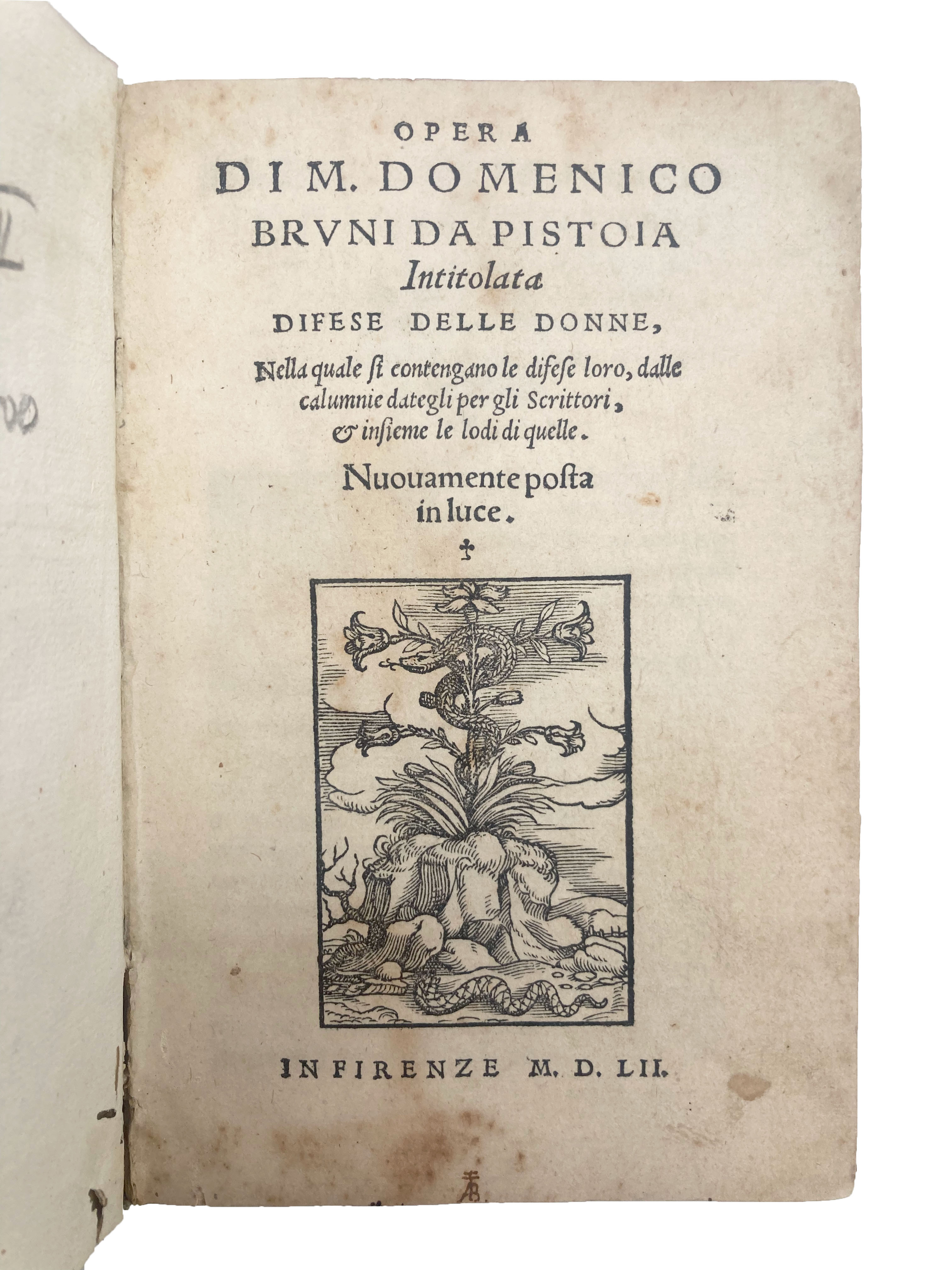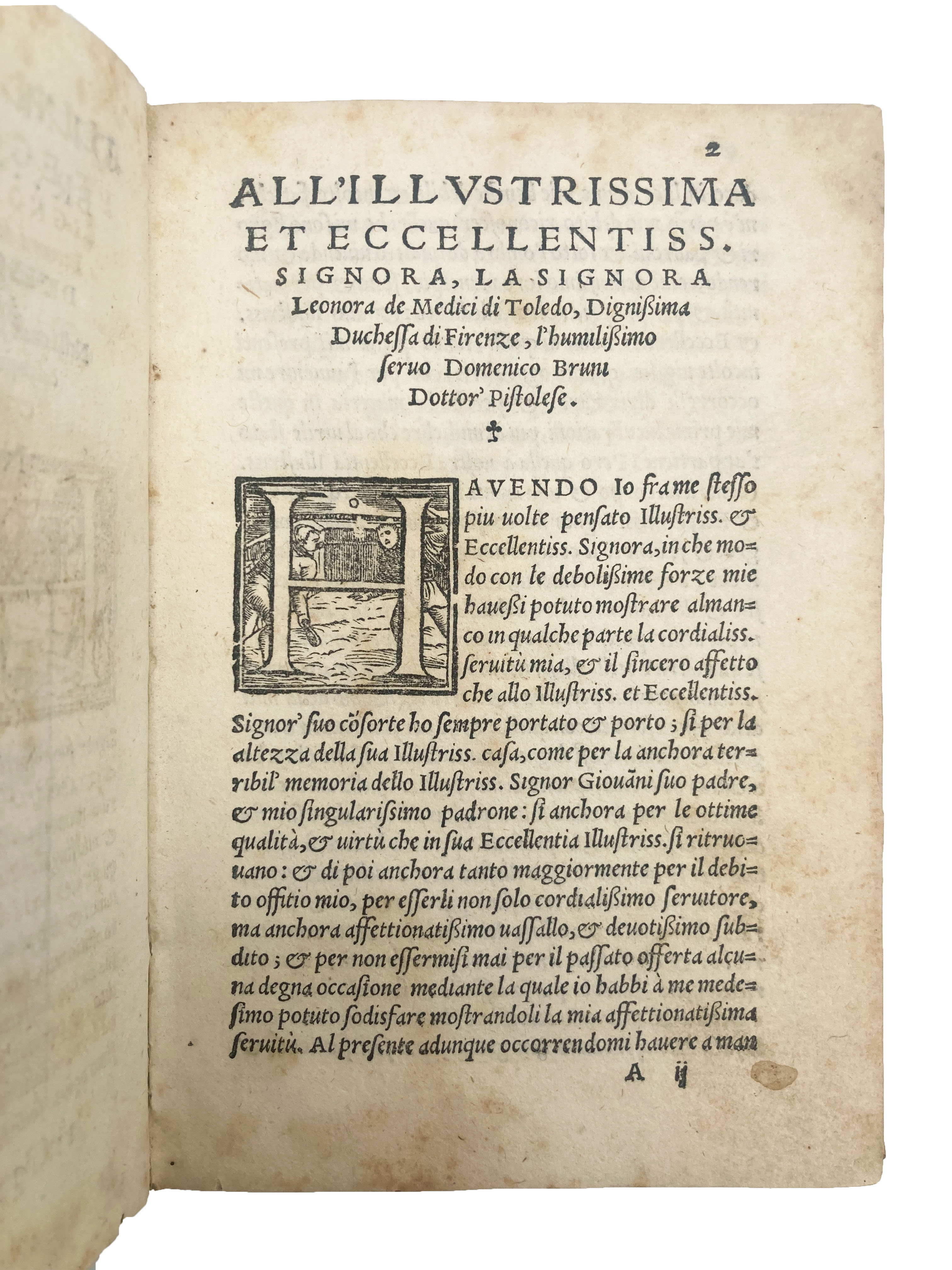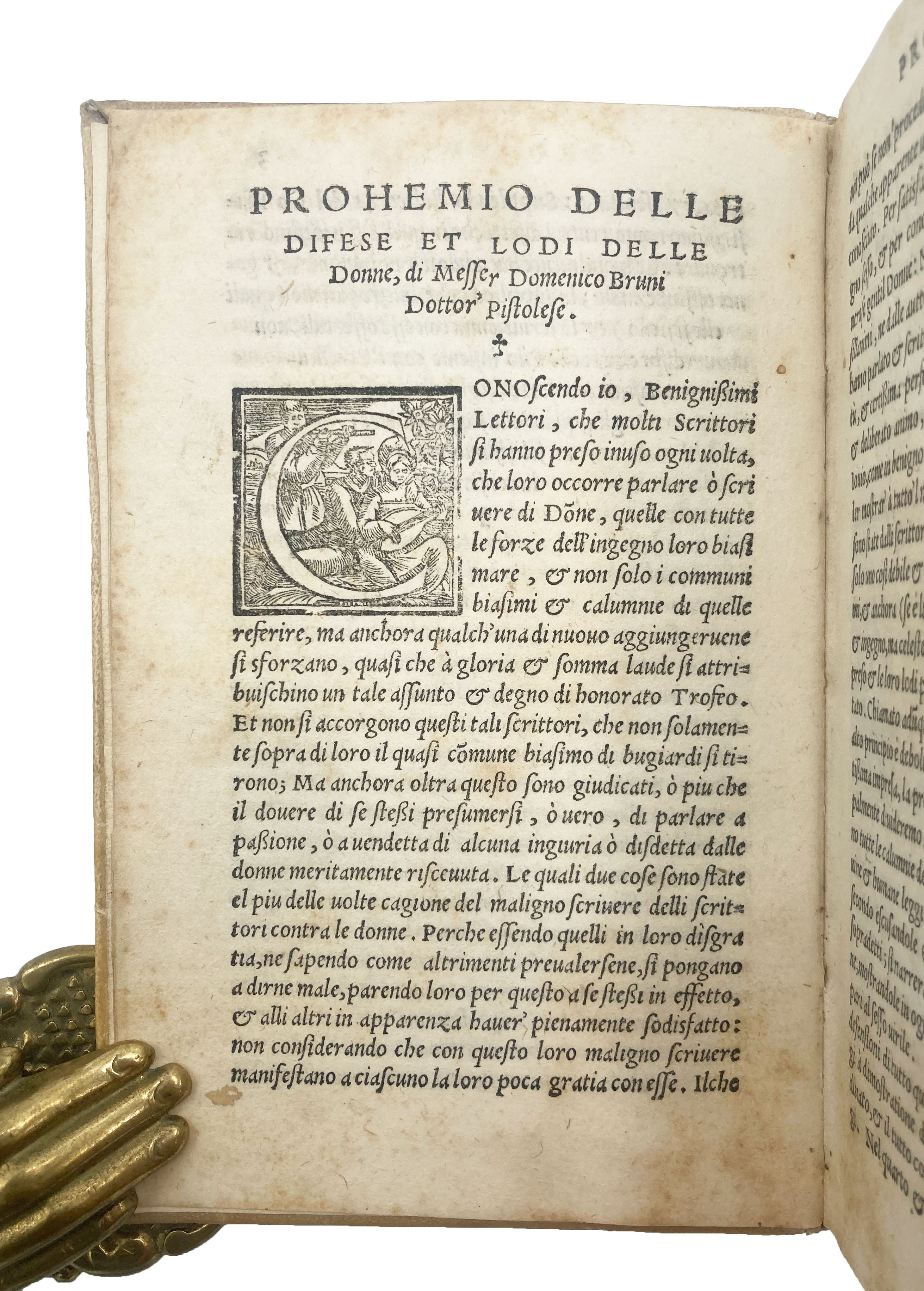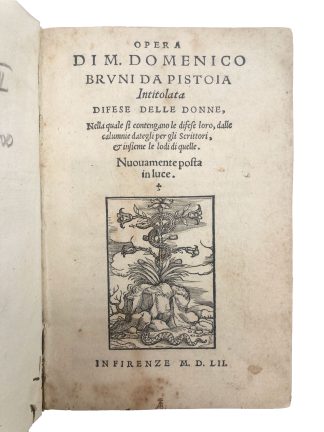BRUNI DA PISTOIA, Domenico
WOMEN AND THE LAW
Difese delle Donne
Firenze, Giunti, 1552£2,750.00
FIRST EDITION. 8vo. ff. 86, [2]. Italic letter, little Roman. Woodcut printer’s device to title and last verso, decorated initials and ornaments. Light age yellowing, slight mainly marginal foxing, a bit heavier to first 4 ll., couple of small worm trails to outer blank margin of last two ll. A good copy in contemporary vellum, ms title to spine, C19 ms note (ed. citata nella Libreria Capponi) and price to front and rear pastedown, early ms chiffre AB and old ink mark to foot of title.
First edition of this influential defence of women by the jurist and cleric Domenico Bruni da Pistoia. It was dedicated to Eleanor of Toledo, wife of Cosimo I de’ Medici, a figure who had elicited great praise from numerous literati as well as criticism for her direct involvement in the management of the Duchy and its finances during her husband’s absences. In ‘Difese’, Bruni ‘upholds that the intellectual inferiority traditionally attributed to women does not derive from the principles of natural or divine law, but rather from the misogynistic structure of society itself, strengthened by centuries of use and social habits’ (Stella, p.290). Part I gathers criticism against women by writers and scholars, whilst Part II defends women against broader criticism, presenting virtuous examples from the past, including Eve and women from Greek and Roman antiquity. The very interesting Part III examines the legal
aspects of the ‘questione femminile’, summarising the canon laws (twenty-five) that limit women’s agency in society, e.g., their exclusion from the management of estate assets and feudal inheritance. According to Bruni, these laws were put in place ‘so as to protect female fragility, rather than being rooted in social discredit of women. However, he also admits that these laws ended up generating a negative vision of women throughout the ages, even though their nature is noble, virtuous, and superior to that of men’ (Stella, p.291). A very interesting work, bringing original insight into this important Renaissance debate.





